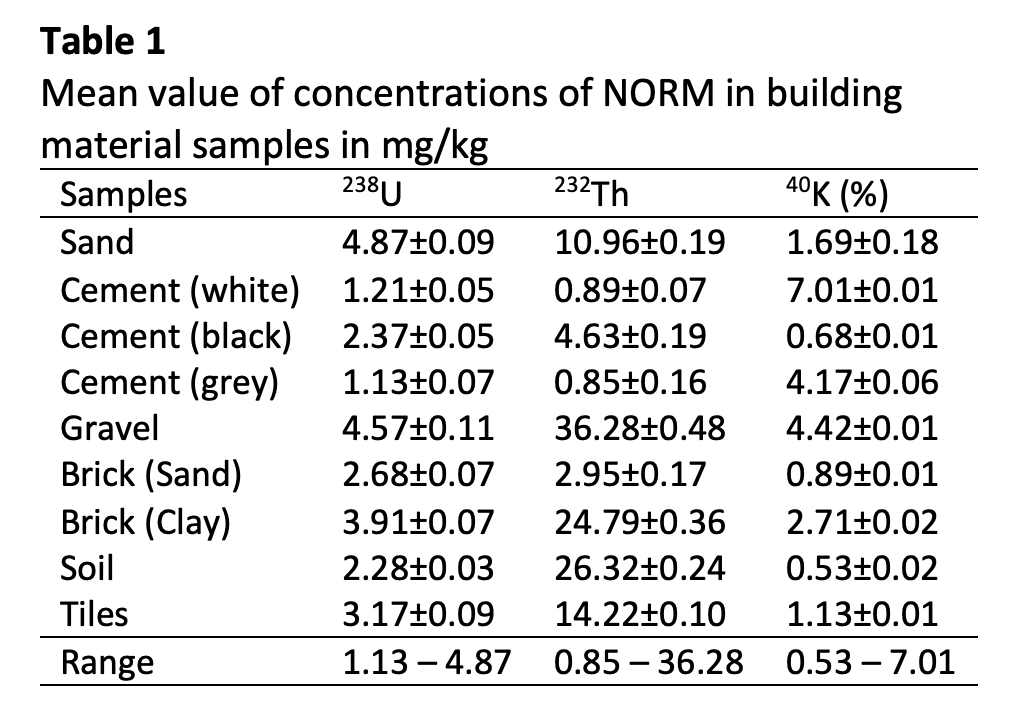Radiological Assessment of Naturally Occurring Radioactive Material (NORMs) in Selected Building Materials
DOI:
https://doi.org/10.37934/araset.38.1.203209Keywords:
NORM, Building Material, EDXRF, Radiological Risk AssessmentAbstract
The use of building materials containing high concentration of naturally occurring radioactive materials (NORMs) may result in the increase of radiation dose rate inside the building. The assessment of radiological hazard in building materials is necessary due to the concern of radiological impact to the people in the building. NORMs present naturally in the environment, but the concentration of radionuclide such as uranium (238U), thorium (232Th) and potassium (40K) may increase due to anthropogenic activities. NORM at certain limit becomes hazardous to environment and human. Thus, the objectives of this study were to determine the level of natural radioactivity in Malaysia’s building materials and to assess the associated radiological risk of selected building materials. The selected material used were sand, soil, cement (white and black), bricks (sand and clay), marble and gravel. The assessment of NORMs in building materials were carried out and the concentrations of were determined using Energy Dispersive X-ray Fluorescence (EDXRF). Activity concentrations of 238U, 232Th and 40K were found to be in the range of 13.93-60.09 Bq/kg, 3.44-128.14 Bq/kg and 2.11-1294.93 % respectively. The external hazard index for all building material samples is under the permissible limits (<1.0) except gravel (1.10). The external hazard index must be less than unity in order to keep the radiation hazard to be negligible. It is suggested that the radiological risk of raw material is predetermined before being used as building material.





























